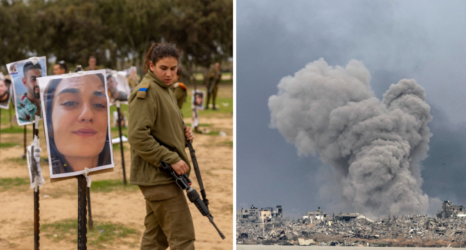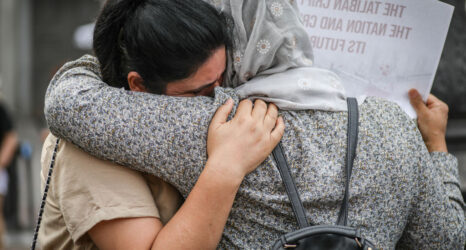Ask any feminist how they think their government is doing at holding perpetrators of sexual violence accountable and most would respond with an emphatic “poorly”—at best. Internationally, there are moves being made to tackle sexual violence, like awarding the Nobel Prize to Nadia Murad and passing the first Security Council Resolution on the issue. Still, they go nowhere near solving systemic problems.
There currently exists, however, a major opportunity to reform how the international justice system addresses sexual violence: the investigations into genocidal violence against the Rohingya in Burma. A gendered understanding of these crimes is essential and will fulfill the international community’s responsibility to recognize and punish all forms of genocidal violence.

Two years ago this week, the Burmese military began a systematic campaign of brutal violence against Rohingya Muslims in Burma’s northern Rakhine State. The military launched attacks called “clearance operations,” that included burning villages, killing civilians and carrying out systematic sexual violence against the Rohingya.
In July, the prosecutor of the International Criminal Court (ICC), Fatou Bensouda, requested to investigate alleged crimes committed against the Rohingya—including deportation, persecution and other inhumane acts. Her investigation must include the reports of sexual violence from the UN’s Fact-Finding Mission on Myanmar, which showed that sexual violence occurred with such intensity that it may amount to genocide.
Despite the prevalence of sexual violence in conflict, there is only one standing conviction of sexual violence in the history of the ICC: the recent conviction of Congolese Commander Bosco Ntaganda. The role of gender in genocide has long been neglected, but the ICC has a chance to change that in its investigation of the Rohingya.
There are two key insights on gender and genocide that must be understood for the Rohingya investigation. First, genocide can be carried out with acts that don’t immediately kill but are intended to destroy a national, racial, ethnic or religious group. Rape, forced sterilization and forced pregnancy are examples of sexual violence that, when paired with the required level of intent to destroy, can constitute genocide.
There are ample reports of such acts perpetrated against the Rohingya. For instance, Rohingya women were subjected to female genital mutilation after rape. This speaks to the military’s intent to destroy the very means of their “enemy’s” reproduction.
Non-killing crimes of genocide such as these are more often committed against women than they are against men. The UN High Commissioner for Human Rights reported that in the 2016 “clearance operations,” the military would separate Rohingya communities by gender. Men would be detained, beaten and killed; women would be subjected to sexual violence, public humiliation and strip searches.
The Burmese government has rejected allegations of rape during the clearance operations, calling them “fake rape.” They also denied other reports of sexual violence despite extensive documentation by the UN’s Fact-Finding Mission on Myanmar. One Rakhine border security minister responded: “Look at those women who are making these claims—would anyone want to rape them?”
There is a clear gendered approach to the way crimes were committed against the Rohingya. ICC Prosecutor Bensouda should adhere to her 2014 policy paper in which she states that a gendered perspective will be integrated into all stages of a case, including the investigation. To only investigate genocide committed against men minimizes both the sexual violence committed against women and the genocide itself.
Centering gender in the pursuit of justice for the Rohingya sends a strong message that the days of impunity for sexual violence are numbered.





